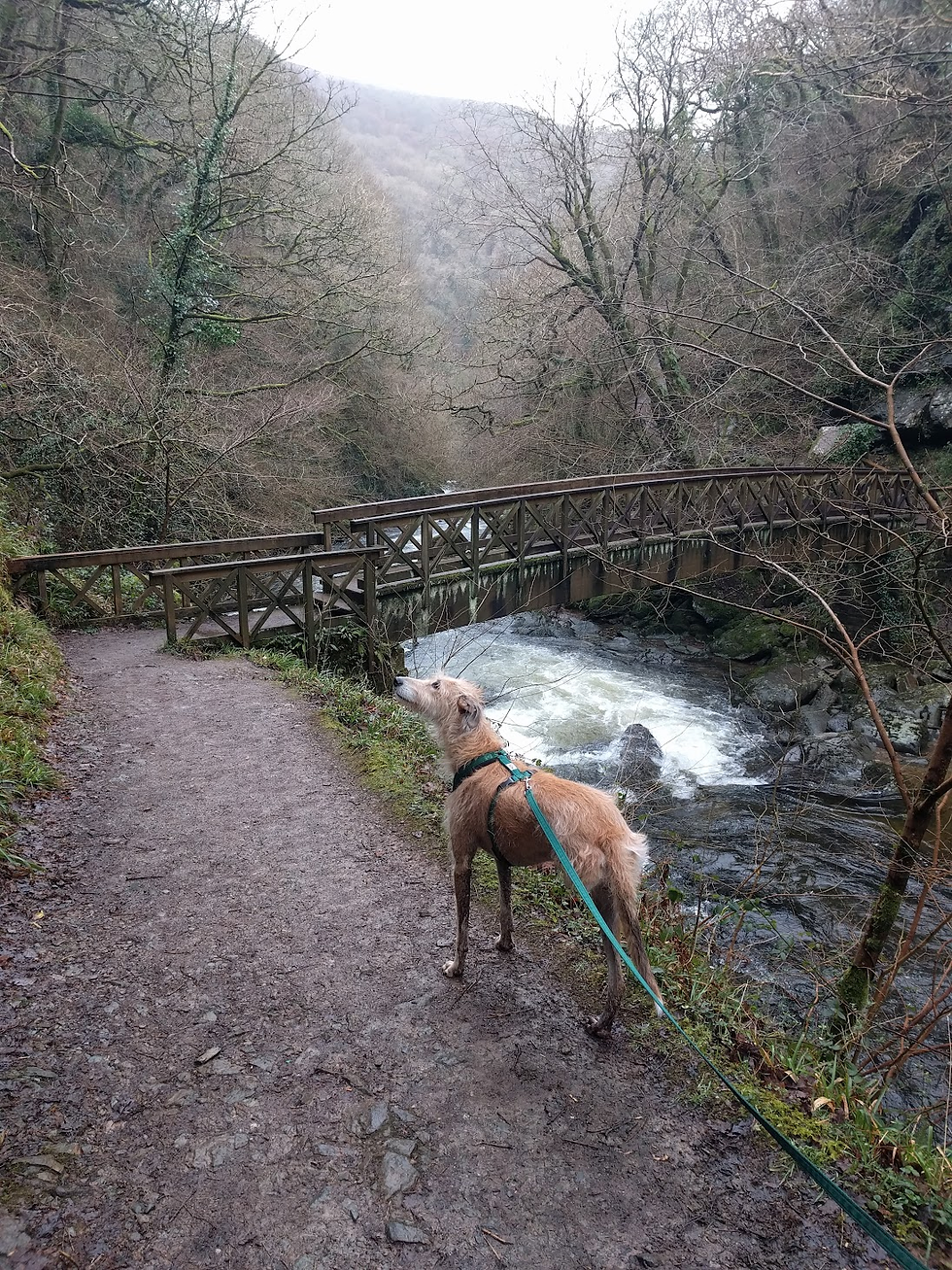Wildlife and dogs: how to ensure your dog plays nice with others
- Harriet Alexander
- Apr 30, 2023
- 4 min read
A few weeks ago I dragged myself out of bed to take Zelda, my young and energetic kelpie mix, for an early walk. I promised myself a delicious coffee on the way home as I pulled on my gumboots (positive reinforcement works for humans too). It was one of those beautiful mornings we often get in central Victoria - cold, still and misty. As we rounded a corner, I felt an eerie sensation of being watched.

Can you spot them? In the distance was one of the biggest mobs of kangaroos I've seen, watching us intently. Zelda's ears were bolt upright (even more than usual), and she stood squarely in place, body leaning forward. I asked her to walk closer to me, clipped on her lead, and we continued on our way.
As a herding dog, Zelda has a strong tendency to want to control movement - through strong eye contact, stalking and chasing. She was a big part of my inspiration to become a licenced Un-Chase! trainer, as I understand how difficult it can be to gain your dog's focus when they are so strongly triggered by livestock and wildlife (the good news? It IS possible, without needing to resort to anything aversive). Teaching certain skills, such as a strong recall and reinforcing calmness around chase triggers, is invaluable. Yet safety around other animals is about more than just skill building. It's about considering the perspective of every animal in the picture, and keeping management front and centre.
Based on what I know of Zelda, I could have kept her lead off and been confident that if she took off towards them, she would respond to my request to return. But what would be best for the roos themselves, quietly enjoying their breakfast as the sun rose? Dogs moving in their direction, even if they are able to be called away, can be frightening and unsettling. While it's important to teach our dogs in real-life settings, other animals shouldn't be used as an experiment to do this.
Australia is full of incredible and unique wildlife, and many are endangered and threatened. While dogs can bring us such joy and be incredible companions, they can also pose a risk to native animals and their habitat. These animals face enough challenges as it is without the added threat of dogs barging into their habitats and causing harm. Some of these threats are obvious, such as dogs chasing down and killing wallabies and kangaroos, or separating youngsters from their mothers. Others may be less so, such as ground nesting birds having their nests disturbed and destroyed by scurrying and digging paws. Increased stress and pressure can impact the immune systems of animals, and reduce reproduction.
Part of being a responsible dog guardian is balancing our dog's need to express natural behaviour with the protection and comfort of other species. And yep - that also extends to livestock and the animals you may not be so fond of, such as snakes. Regulations exist in local government areas, as well as state and national parks, stipulating whether dogs are permitted, and whether they can be off lead. Familiarising yourself with the rules in your area helps to keep you, your dog and other animals safe.
Other steps you can take to minimise your dog's impact on the environment include:
You guessed it! Training
Too often dogs are written off as incapable of learning safer skills around livestock and wildlife, due to breed, temperament, history or age. A few false starts or the wrong training advice can leave dog guardians feeling deflated, and more likely to resort to punishing tools and gadgets. Luckily, there are loads of reward based training options out there which specialise in safety around other animals. A specialist trainer can also help to assess what is realistic for your individual dog, and ensure that everyone is kept safe throughout the training process. If you're interested in this type of training, get in touch or join the mailing list to find out about upcoming Un-Chase! workshops.
Pick up after your dog
It may not feel necessary when out in the bush, but picking up after your dog is still important. Dog waste can contains bacteria and parasites that can be harmful to wildlife if left on the ground. It can also contaminate waterways and harm aquatic life.
Stay on track
Racing through undergrowth and sticking their heads into holes can easily disturb wildlife (it's also dangerous for your dog, particularly if they encounter a slithery friend). Teaching your dog a solid 'this way!' to keep them on designated paths can be very useful when out in the bush. Sniffing the edges and exploring around you is generally fine, and important for your dog's wellbeing, but keep them away from overgrown and undisturbed areas.
Invest in the right equipment
If you love getting out into nature with your dog, make sure you have the right tools for the job. This is especially the case if you are still working on their training. A well-fitting harness which doesn't restrict movement, as well as a long lead (3 metres minimum), makes for a more comfortable walk with you and your dog. A long line (5-10 metres works well) can be a fantastic tool while bushwalking - it allows your dog more freedom while maintaining safety for everyone.





コメント